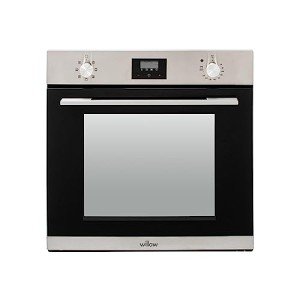Why Nobody Cares About Built-In Oven
페이지 정보

본문

Understanding Built-in Ovens and Hobs: The Perfect Kitchen Combination
As modern-day cooking areas evolve, built-in appliances are becoming progressively popular for both functionality and aesthetics. Amongst these appliances, built-in ovens and hobs stand apart as necessary parts for any culinary lover or home cook. This post explores the advantages, features, and considerations surrounding built-in ovens and hobs. It also resolves typical questions, providing an extensive guide to these kitchen basics.
What are Built-in Ovens and Hobs?
Built-in ovens are integrated oven into kitchen cabinets, creating a smooth, seamless look. They can be found in different types, including conventional, convection, and steam ovens, each accommodating various cooking approaches. Hobs, on the other hand, integrated oven hob & extractor packages are the cooking surfaces that integrate with the kitchen countertop. They can be gas, electric, or induction, permitting cooks to choose based upon their cooking style and energy preference.
Advantages of Built-in Ovens and Hobs
- Space-Saving: Built-in designs make the most of kitchen area by eliminating the need for freestanding units, developing an open and airy environment.
- Visual Appeal: Their sleek style contributes to a contemporary, streamlined appearance in the kitchen.
- Enhanced Functionality: Built-in ovens typically come with advanced cooking innovation, offering a variety of functions like self-cleaning and smart controls.
- Personalization: Manufacturers use a variety of surfaces and styles, permitting house owners to tailor their appliances to match their kitchen décor.
Kinds Of Built-in Ovens
1. Traditional Ovens
Traditional ovens utilize convected heat from the bottom and can be ideal for baking.
2. Convection Ovens
Stove have a fan that circulates hot air, ensuring even cooking. They reduce cooking time and are ideal for roasting meats or vegetables.
3. Steam Ovens
Steam ovens use moist heat to cook food, protecting nutrients and tastes. They are ending up being significantly popular among health-conscious cooks.
4. Microwave Ovens
These ovens offer fast heating and cooking and serve numerous functions, from reheating leftovers to baking.
Kinds of Hobs
1. Gas Hobs
Gas hobs utilize gas or gas for cooking. They supply immediate heat control, making them a preferred among expert chefs.
2. Electric Hobs
Electric hobs have strong or ceramic surfaces that warm up via electric coils. They are simple to clean but may take longer to heat than gas models.
3. Induction Hobs
Induction hobs use electro-magnetic energy to directly heat pots and pans, using quick heating and energy efficiency. They cool off rapidly and integrated Oven hob & extractor Packages provide a much safer cooking experience.
Factors to Consider When Choosing Built-in Ovens and Hobs
When picking built-in ovens and hobs, several factors need to be considered:
1. Area Limitations
Measure the offered space in your kitchen to guarantee that the appliances will fit effortlessly into the kitchen cabinetry.
2. Cooking Style
Consider your cooking practices. If you often bake, a stove might be ideal. On the other hand, induction hobs are excellent for security and effectiveness.
3. Spending plan
Prices varies substantially based on features and brand names. Setting a budget helps narrow down the choices.
4. Energy Source
Figure out whether you desire gas or electric appliances. This choice can impact cooking efficiency and energy expenses.
5. Looks
Choose surfaces and designs that match your kitchen's design. Stainless steel is a popular option for a modern appeal.
Comparison of Built-in Ovens and Hobs
| Feature | Built-in fitted oven | Built-in Hob |
|---|---|---|
| Type | Convection, steam, and so on. | Gas, electric, induction |
| Cooking Versatility | High | Moderate to high |
| Cleaning up Ease | Varies by model | Normally easy to tidy |
| Setup Style | Integrated oven hob & extractor packages in kitchen cabinetry | Flush with counter top |
| Energy Efficiency | Differs by model | Induction usually most efficient |
Frequently Asked Questions About Built-in Ovens and Hobs
1. Are built-in ovens more expensive than freestanding designs?
Yes, built-in ovens generally come with a higher price due to their style and installation requirements. Nevertheless, they often use advanced functions.
2. Can I change my existing freestanding oven with a built-in model?
Yes, it's possible to replace a freestanding oven with a built-in design, however you may need to make adjustments to your cabinetry and kitchen layout.
3. What maintenance do built-in ovens and hobs require?
Regular cleansing is necessary. Many built-in fitted ovens come with self-cleaning functions. It's also essential to keep the hobs without spills and grease.
4. Are induction hobs safe for families?
Induction hobs are considered safer than gas or electric alternatives because they only warm the pots and pans, lowering the danger of burns or mishaps.

5. How can I optimize the efficiency of my built-in oven and hob?
To optimize effectiveness, always pre-heat the intergrated oven when required, utilize the proper size pots or pans on the hob, and consider using the recurring heat from your hob after cooking.
Built-in Oven ovens and hobs provide many benefits, making them popular options for modern kitchens. Their space-saving designs, advanced functions, and visual appeal add to their high demand. By thinking about aspects like area, cooking style, and budget, property owners can pick the ideal combination of appliances that best fit their culinary requirements. Whether through gas, electric, or induction hobs, and a range of oven types, the best built-in kitchen appliances can improve the cooking experience while raising the total aesthetic of the kitchen.
- 이전글Why Ignoring Daycare Near Me - Find The Best Daycares Near You Will Price You Time and Sales 25.05.18
- 다음글Are You Good At Poker Stakes? Here's A quick Quiz To seek out Out 25.05.18
댓글목록
등록된 댓글이 없습니다.